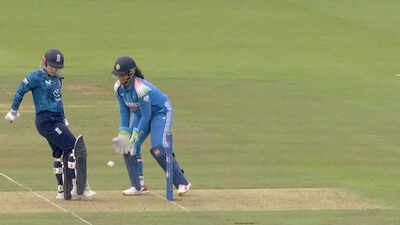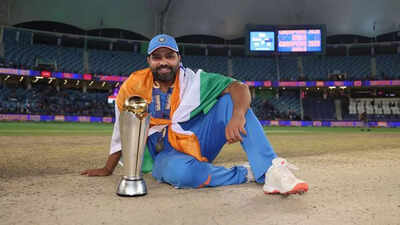Out or Not Out? Tammy Beaumont’s close call vs India: What the rules say | Cricket News

Controversy unfolded at Lord’s during the second Women’s ODI between India and England, that tipped in the hosts’ favour this time around following a win for India in the 1st. In the fifth over of England’s innings, Deepti Sharma bowled a fuller delivery to Tammy Beaumont. The English opener drove it towards Jemimah Rodrigues at short midwicket. Rodrigues dove to her right, stopped the ball, and threw it back towards wicketkeeper Richa Ghosh. Beaumont, whocut short her run after opting against a quick single, was walking back to the crease. After placing her left foot inside the crease, with her right leg, she appeared to attempt kicking the ball away. Though she didn’t make contact, it appeared that she had tried to stop the ball with her foot before it reached Ghosh.The visitors appealed without fail, gesturing to the umpires that Beaumont had tried to interfere with the throw. The umpires had a long discussion and opted for a review. After watching a few replays, the third umpire decided Beaumont was not out. However, according to the laws, there is no exemption that protects a batter from being given out for Obstructing the Field even if they are back inside the crease. The ball was still in play at the time, which is clear from the fact that it was moving towards the India wicketkeeper.
37 OBSTRUCTING THE FIELD
- 37.1 Out Obstructing the field
- 37.1.1Either batter is out Obstructing the field if, except in the circumstances of clause 37.2, and while the ball is in play, she wilfully attempts to obstruct or distract the fielding side by word or action. See also clause 34 (Hit the ball twice).
- 37.1.2 The striker is out Obstructing the field if, except in the circumstances of clause 37.2, in the act of receiving a ball delivered by the bowler, she wilfully strikes the ball with a hand not holding the bat. This will apply whether it is the first strike or a second or subsequent strike. The act of receiving the ball shall extend both to playing at the ball and to striking the ball more than once in defence of her wicket.
- 37.1.3 This clause will apply whether or not No ball is called.
- 37.1.4 For the avoidance of doubt, if an umpire feels that a batter, in running between the wickets, has significantly changed her direction without probable cause and thereby obstructed a fielder’s attempt to effect a run out, the batter should, on appeal, be given out, obstructing the field. It shall not be relevant whether a run out would have occurred or not. If the change of direction involves the batter crossing the pitch, clause 41.14 shall also apply.
Additionally, it has been mentioned in another clause that the batter will not be out if they Obstruct the field accidentally, to avoid injury or in the case of a second/subsequent strike made to guard the wicket lawfully (for a striker).However, the not out decision didn’t hurt India much in terms of runs conceded, given that Beaumont was batting on 25 off 16 balls at the time and was later dismissed for 34 off 35 by Sneh Rana in the 11th over.
Poll
Should Tammy Beaumont have been given out for obstructing the field?
England level series after rain-hit win
In the match itself, England bounced back to win the second ODI by eight wickets in a rain-shortened game at Lord’s. Chasing a revised target of 115, opener Amy Jones guided the hosts home with an unbeaten 46, helping them level the three-match series 1-1. India, who had successfully chased down 259 in the first ODI, struggled with the bat this time. They managed only 143/8 in the 29-overs-per-side match, with Smriti Mandhana top-scoring with 42.







